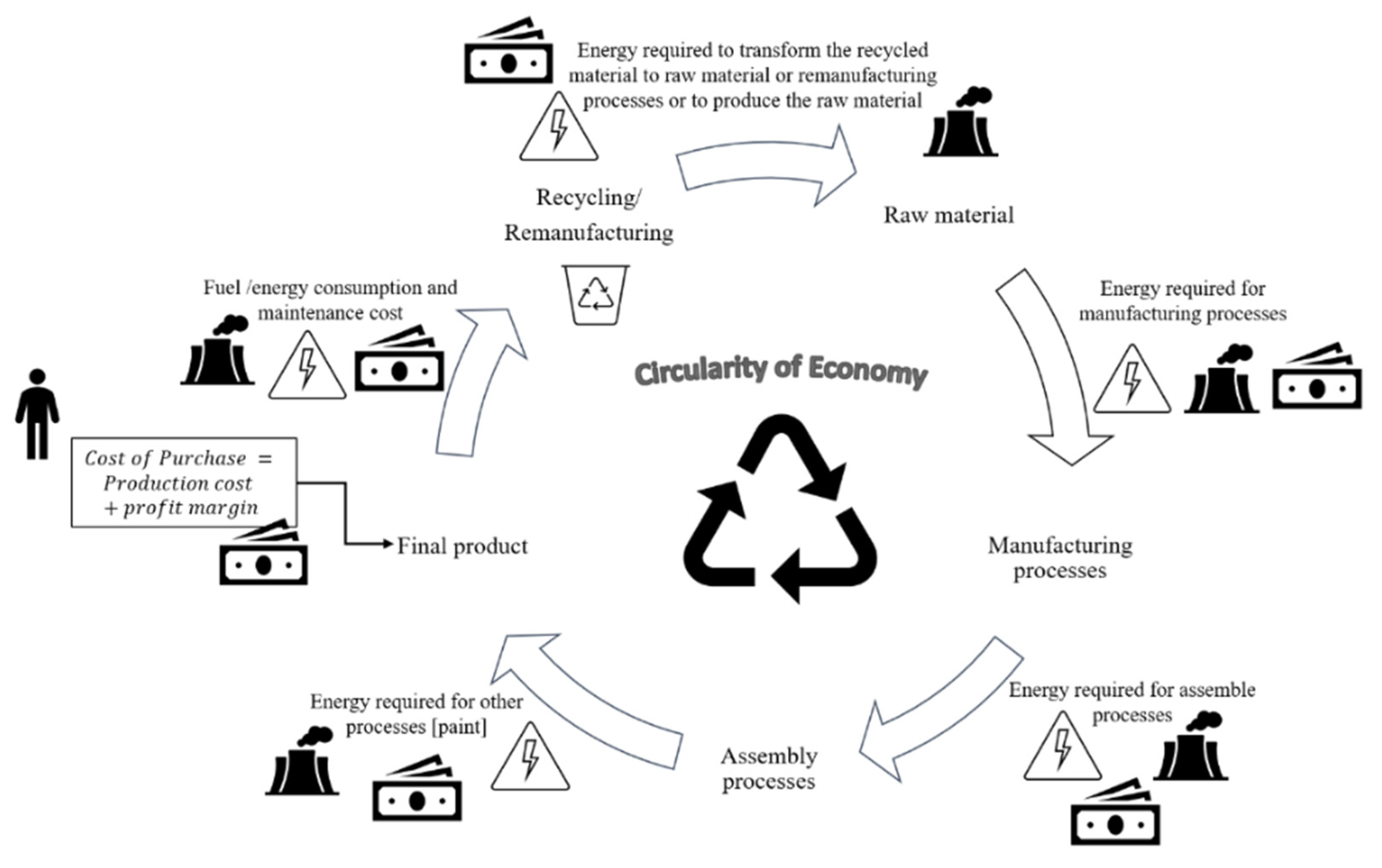On the Relationship between Circular and Innovation Approach to Economy
Abstract
:1. Introduction
2. Current Status
Detailed Comparison of the Two Economies and Literature Gap
3. Approach
3.1. Innovation Economy (I.E)-Reduced Components
3.2. A Modified Version of the Method
4. Case Studies
5. Results
6. Discussion
6.1. Critique of the Monetary Approach
6.2. Variable Profit Margin Analysis
7. Conclusions
Author Contributions
Funding
Institutional Review Board Statement
Informed Consent Statement
Data Availability Statement
Conflicts of Interest
References
- Chryssolouris, G. Manufacturing Systems: Theory and Practice, 2nd ed.; Springer: New York, NY, USA, 2006. [Google Scholar]
- Stavropoulos, P.; Giannoulis, C.; Papacharalampopoulos, A.; Foteinopoulos, P.; Chryssolouris, G. Life Cycle Analysis: Comparison between Different Methods and Optimization Challenges. In Proceedings of the 48th CIRP Conference on Manufacturing Systems (CIRP CMS 2015), Procedia CIRP, Naples, Italy, 24–26 June 2016; Volume 41, pp. 626–631. [Google Scholar]
- Bocken, N.M.P.; Pauw, I.; Bakker, C.; Grinten, B. Product design and business model strategies for a circular economy. J. Ind. Prod. Eng. 2016, 33, 308–320. [Google Scholar] [CrossRef] [Green Version]
- Stavropoulos, P.; Spetsieris, A.; Papacharalampopoulos, A. A Circular Economy based Decision Support System for the Assembly/Disassembly of Multi-Material Components. In Proceedings of the 2nd CIRP Conference on Composite Material Parts Manufacturing (CIRP-CCMPM 2019), Elsevier Procedia CIRP, Catcliffe, UK, 10–11 October 2019; Volume 85, pp. 49–54. [Google Scholar] [CrossRef]
- Korhonen, J.; Honkasalo, A.; Seppälä, J. Circular Economy: The Concept and its Limitations. Ecol. Econ. 2018, 143, 37–46. [Google Scholar] [CrossRef]
- Lacy, P.; Rutqvist, J. Waste and Wealth: The Circular Economy Advantage; Palgrave, Macmillan: London, UK, 2015. [Google Scholar]
- Pagoropoulos, A.; Pigosso, D.C.A.; McAloone, T.C. The Emergent Role of Digital Technologies in Circular Economy. Procedia CIRP 2017, 64, 19–24. [Google Scholar] [CrossRef] [Green Version]
- Fysikopoulos, A.; Pastras, G.; Alexopoulos, T.; Chryssolouris, G. On a generalized approach to manufacturing energy efficiency. Int. J. Adv. Manuf. Technol. 2014, 73, 1437–1452. [Google Scholar] [CrossRef] [Green Version]
- Muñoz, I.; Alonso-Madrid, J.; Menéndez-Muñiz, M.; Uhart, M.; Canou, J.; Martin, C.; Fabritius, M.; Calvo, L.; Poudelet, L.; Cardona, R.; et al. Life cycle assessment of integrated additive–subtractive concrete 3D printing. Int. J. Adv. Manuf. Technol. 2021, 112, 2149–2159. [Google Scholar] [CrossRef]
- Petrides, D.; Papacharalampopoulos, A.; Stavropoulos, P.; Chryssolouris, G. Dematerialization and Environmental Sustainability: Challenges and Rebound Effects. Procedia CIRP 2018, 72, 845–849. [Google Scholar] [CrossRef]
- Lieder, M.; Rashid, A. Towards circular economy implementation: A comprehensive review in context of manufacturing industry. J. Clean. Prod. 2016, 15, 36–51. [Google Scholar] [CrossRef]
- Geissdoerfer, M.; Savaget, P.; Bocken, M.P.N.; Hultink, E.J. The Circular Economy—A new sustainability paradigm. J. Clean. Prod. 2017, 143, 757–768. [Google Scholar] [CrossRef] [Green Version]
- Beaulieu, L.; Durme, G.; Arpin, M.L. Circular Economy: A Critical Review of Concepts. In International Reference Centre for the Lifecycle of Products, Processes and Services; CIRAIG: Montréal, QC, Canada, 2015. [Google Scholar] [CrossRef]
- Durand, P. On a Longer Lifetime for Products: Benefits for Consumers and Companies (2016/2272(INI)); European Parliament—Committee on the Internal Market and Consumer Protection: Brussels, Belgium, 2017. [Google Scholar]
- Lewandowski, M. Designing the business models for circular economy—Towards the conceptual framework. Sustainability 2016, 8, 43. [Google Scholar] [CrossRef] [Green Version]
- Mariale, M.; Rios, C.D.; Rowe, Z.; Charnley, F. A Conceptual Framework for Circular Design. Sustainability 2016, 8, 937. [Google Scholar]
- Wang, L.; Li, H. Decomposition Analysis on Dematerialization for the Further Development of Circular Economy. In Proceedings of the 4th International Conference on Bioinformatics and Biomedical Engineering, Granada, Spain, 10–12 June 2010; pp. 1–4. [Google Scholar] [CrossRef] [Green Version]
- Mamasioulas, A.; Mourtzis, D.; Chryssolouris, G. A manufacturing innovation overview: Concepts, models and metrics. Int. J. Comput. Integr. Manuf. 2020, 33, 769–791. [Google Scholar] [CrossRef]
- Meglio, O.; Di Paola, N. Innovation and Entrepreneurship for Well-Being and Sustainability. Sustainability 2021, 13, 9154. [Google Scholar] [CrossRef]
- Pece, A.M.; Simona, O.E.O.; Salisteanu, F. Innovation and Economic Growth: An Empirical Analysis for CEE Countries. Procedia Econ. Financ. 2015, 26, 461–467. [Google Scholar] [CrossRef] [Green Version]
- Duesenberry, J. Papers and Proceedings of the Sixty-eighth Annual Meeting of the American Economic Association. In Innovation and Growth, The American Economic Review; American Economic Association: Evanston, IL, USA, 1956; Volume 46, pp. 134–141. [Google Scholar]
- Reim, W.; Parida, V.; Sjödin, D.R. Circular Business Models for the Bioeconomy: A Review and New Directions for Future Research. Sustainability 2019, 11, 2558. [Google Scholar] [CrossRef] [Green Version]
- Papacharalampopoulos, A.; Stavropoulos, P.; Stavridis, J. Adaptive control of thermal processes: Laser welding and additive manufacturing paradigms. In Proceedings of the CIRP Conference on Intelligent Computation in Manufacturing Engineering, (ICME 2017), Gulf of Naples, Italy, 19–21 July 2017; Volume 67, pp. 233–237. [Google Scholar] [CrossRef]
- Chryssolouris, G.; Papakostas, N.; Mavrikios, D. A perspective on manufacturing strategy: Produce more with less. CIRP J. Manuf. Sci. Technol. 2008, 1, 45–52. [Google Scholar] [CrossRef]
- Papacharalampopoulos, A.; Bikas, H.; Michail, C.; Stavropoulos, P. On the generation of validated manufacturing process optimization and control schemes. In Proceedings of the 8th CIRP Conference of Assembly Technology and Systems (CIRPe 2020), Procedia CIRP, Athens, Greece, 29 September–1 October 2020; Volume 96, pp. 57–62. [Google Scholar] [CrossRef]
- Stavropoulos, P.; Papacharalampopoulos, A.; Petridis, D. A vision-based system for real-time defect detection: A rubber compound part case study. In Proceedings of the 53rd CIRP Conference on Manufacturing Systems (CIRP 2020), Procedia CIRP, Chicago, IL, USA, 1–3 July 2020; Volume 93, pp. 1230–1235. [Google Scholar] [CrossRef]
- Allwood, J.M.; Gutowski, T.G.; Serrenho, A.C.; Skelton, A.C.; Worrell, E. Industry 1.61803: The transition to an industry with reduced material demand fit for a low carbon future, Philosophical transactions. Ser. A Math. Phys. Eng. Sci. 2017, 375, 2095. [Google Scholar]
- Fridrihsone, A.; Romagnoli, F.; Kirsanovs, V.; Cabulis, U. Life Cycle Assessment of vegetable oil based polyols for polyurethane production. J. Clean. Prod. 2020, 266, 121403. [Google Scholar] [CrossRef]
- Lueddeckens, S.; Saling, P.; Guenther, E. Temporal issues in life cycle assessment—A systematic review. Int. J. Life Cycle Assess. 2020, 25, 1–17. [Google Scholar] [CrossRef]
- Thonemann, N.; Schulte, A.; Maga, D. How to conduct prospective life cycle assessment for emerging technologies? A systematic review and methodological guidance. Sustainability 2020, 12, 1192. [Google Scholar] [CrossRef] [Green Version]
- Bobba, S.; Ardent, F.; Fabrice, M. Environmental and economic assessment of durability of energy-using products: Method and application to a case-study vacuum cleaner. J. Clean. Prod. 2016, 137, 762–776. [Google Scholar] [CrossRef]
- Bakshi, B.R.; Gutowski, T.G.; Sekulic, D.P. Claiming sustainability: Requirements and challenges. ACS Sustain. Chem. Eng. 2018, 6, 3632–3639. [Google Scholar] [CrossRef]
- Sangprasert, W.; Pharino, C. Environmental Impact Evaluation of Mobile Phone via Life Cycle Assessment, In Proceedings of the 3rd International Conference on Chemical, Biological and Environment Sciences (ICCEBS’2013), Kuala Lumpur, Malaysia, 8–9 January 2013.
- Loyarte-López, E.; Barral, M.; Morla, J.C. Methodology for Carbon Footprint Calculation towards Sustainable Innovation in Intangible Assets. Sustainability 2020, 12, 1629. [Google Scholar] [CrossRef] [Green Version]
- Chrysostomou, C.; Kylili, A.; Nicolaides, D.; Fokaides, P. Life Cycle Assessment of concrete manufacturing in small, isolated states: The case of Cyprus. Int. J. Sustain. Energy 2015, 36, 825–839. [Google Scholar] [CrossRef]
- Braakman, L.; Bhochhibhoya, S.; de Graaf, R. Exploring the relationship between the level of circularity and the life cycle costs of a one-family house. Resour. Conserv. Recycl. 2021, 164, 105149. [Google Scholar] [CrossRef]
- Stavropoulos, P.; Papacharalampopoulos, A.; Michail, C.; Vassilopoulos, V.; Alexopoulos, K.; Perlo, P. A two-stage decision support system for manufacturing processes integration in microfactories for electric vehicles. Procedia Manuf. 2021, 54, 106–111. [Google Scholar] [CrossRef]
- Morseletto, P. Targets for a circular economy. Resour. Conserv. Recycl. 2020, 153, 104553. [Google Scholar] [CrossRef]
- Montalvo, C.; Peck, D.; Rietveld, E. A longer lifetime for products: Benefits for consumers and companies. In Directorate General for Internal Policies, Policy Department A: Economic and Scientific Policy; European Parliament: Brussels, Belgium, 2016. [Google Scholar]
- Ardente, F.; Fabrice, M. Environmental assessment of the durability of energy-using products: Method and application. J. Clean. Prod. 2014, 74, 62–73. [Google Scholar] [CrossRef]
- Tasaki, T.; Masaharu, M.; Hiroyuki, U.; Yasufumi, S. Assessing the Replacement of Electrical Home Appliances for the Environment an Aid to Consumer Decision Making. J. Ind. Ecol. 2013, 17, 290–298. [Google Scholar] [CrossRef]
- Mattila, T. Use of Input-Output Analysis in LCA; Springer: Berlin/Heidelberg, Germany, 2018. [Google Scholar] [CrossRef]
- Han, N. The environmental impact of steel and aluminum body-in-whites. JOM 1996, 48, 33–38. [Google Scholar] [CrossRef]
- ISO 13.020.60. Product Life-Cycles. Available online: https://www.iso.org/ics/13.020.60/x/ (accessed on 2 September 2021).
- Friant, M.C.; Vermeulen, W.J.; Salomone, R. A typology of circular economy discourses: Navigating the diverse visions of a contested paradigm. Resour. Conserv. Recycl. 2020, 161, 104917. [Google Scholar] [CrossRef]
- Corvellec, H.; Stowell, A.F.; Johansson, N. Critiques of the circular economy. J. Ind. Ecol. 2021, 1–12. [Google Scholar] [CrossRef]
- Singh, S.; Aggarwal, Y. In search of a consensus definition of innovation: A qualitative synthesis of 208 definitions using grounded theory approach. Innov. Eur. J. Soc. Sci. Res. 2021, 1–19. [Google Scholar] [CrossRef]
- Vacchi, M.; Siligardi, C.; Ferrari, A.M.; Settembre-Blundo, D. Industry 4.0 and Smart Data as Enablers of the Circular Economy in Manufacturing: Product Re-Engineering with Circular Eco-Design. Sustainability 2021, 13, 10366. [Google Scholar] [CrossRef]
- Ciliberto, C.; Szopik-Depczyńska, K.; Tarczyńska-Łuniewska, M.; Ruggieri, A.; Ioppolo, G. Enabling the Circular Economy transition: A sustainable lean manufacturing recipe for Industry 4.0. Bus. Strategy Environ. 2021, 1–18. [Google Scholar] [CrossRef]
- Jabbour, C.J.C.; Fiorini, P.D.C.; Wong, C.W.; Jugend, D.; Jabbour, A.B.L.D.S.; Seles, B.M.R.P.; Pinheiro, M.A.P.; da Silva, H.M.R. First-mover firms in the transition towards the sharing economy in metallic natural resource-intensive industries: Implications for the circular economy and emerging industry 4.0 technologies. Resour. Policy 2020, 66, 101596. [Google Scholar] [CrossRef]
- Geissdoerfer, M.; Pieroni, M.P.; Pigosso, D.C.; Soufani, K. Circular business models: A review. J. Clean. Prod. 2020, 123741. [Google Scholar] [CrossRef]
- García-Muiña, F.E.; Medina-Salgado, M.S.; Ferrari, A.M.; Cucchi, M. Sustainability transition in industry 4.0 and smart manufacturing with the triple-layered business model canvas. Sustainability 2020, 12, 2364. [Google Scholar] [CrossRef] [Green Version]
- Gutowski, T.; Chryssolouris, G. Personal Communication, 2017.
- Cooper, D.R.; Gutowski, T.G. The environmental impacts of reuse: A review. J. Ind. Ecol. 2017, 21, 38–56. [Google Scholar] [CrossRef]
- Clifford, M. 17-Motorcycles—Design and project costing. In Case Studies in Engineering Design; Matthews, C., Ed.; Butterworth-Heinemann: Oxford, UK, 1998; pp. 192–216. ISBN 9780340691359. [Google Scholar] [CrossRef]
- Arjan, V.; Annema, A.J.; Geerten, K.; Bert, W. Proposing a more comprehensive future total cost of ownership estimation framework for electric vehicles. Energy Policy 2019, 129, 1034–1046. [Google Scholar] [CrossRef]
- Pantano, E.; Priporas, C.V. The effect of mobile retailing on consumers’ purchasing experiences: A dynamic perspective. Comput. Hum. Behav. 2016, 61, 548–555. [Google Scholar] [CrossRef] [Green Version]
- Dunnewijk, T.; Hultén, S. A brief history of mobile communication in Europe. Telemat. Inform. 2007, 24, 164–179. [Google Scholar] [CrossRef]
- Holl, K.; Elberzhager, F. Chapter One-Mobile Application Quality Assurance. In Advances in Computers; Memon, A.F., Ed.; Elsevier: Amsterdam, The Netherlands, 2019; Volume 112, pp. 1–77. ISSN 0065-2458. ISBN 9780128151211. [Google Scholar] [CrossRef]
- Giachetti, C. Smartphone Start-Ups: Navigating the IPhone Revolution. 2018. Available online: https://link.springer.com/book/10.1007%2F978-3-319-67973-0 (accessed on 12 March 2021).
- Braden, T. Beginning of the New Smartphone Era. Marriott Stud. Rev. 2019, 3. Available online: https://scholarsarchive.byu.edu/marriottstudentreview/vol3/iss1/10 (accessed on 20 September 2021).
- Kobayashi, S.; Plotkin, S.; Ribeiro, S. Energy efficiency technologies for road vehicles. Energy Effic. 2009, 2, 125–137. [Google Scholar] [CrossRef]
- Haugh, D.; Mourougane, A.; Chatal, O. The Automobile Industry in and beyond the Crisis. In OECD, Economics Department, OECD Economics Department Working Papers; OECD: Paris, France, 2010. [Google Scholar] [CrossRef]
- Krupa, J.S.; Rizzo, M.D.; Eppstein, M.J.; Lanute, D.B.; Gaalema, D.E.; Lakkaraju, K.; Warrender, C.E. Analysis of a consumer survey on plug-in hybrid electric vehicles. Transp. Res. Part A Policy Pract. 2014, 64, 14–31. [Google Scholar] [CrossRef]
- Fuel Consumption of Cars and Vans. Available online: https://www.iea.org/reports/fuel-consumption-of-cars-and-vans (accessed on 12 March 2021).
- Ford. The Ford Focus case. Available online: https://www.ford.gr/content/dam/guxeu/gr/documents/pricelists/PL-Cars.pdf (accessed on 20 September 2021).
- European Commission. Car prices within the European Union. Available online: https://ec.europa.eu/competition/sectors/motor_vehicles/prices/2010_07_full.pdf (accessed on 20 September 2021).
- Statista. Average Price of Passenger Cars in the EU in 2015 and 2019. Available online: https://www.statista.com/statistics/425095/eu-car-sales-average-prices-in-by-country/ (accessed on 20 September 2021).
- European Commission. Convergence of Car Prices Improves within EU. Available online: https://ec.europa.eu/commission/presscorner/detail/en/IP_05_1027 (accessed on 20 September 2021).
- Petrauskienė, K.; Galinis, A.; Kliaugaitė, D.; Dvarionienė, J. Comparative Environmental Life Cycle and Cost Assessment of Electric, Hybrid, and Conventional Vehicles in Lithuania. Sustainability 2021, 13, 957. [Google Scholar] [CrossRef]
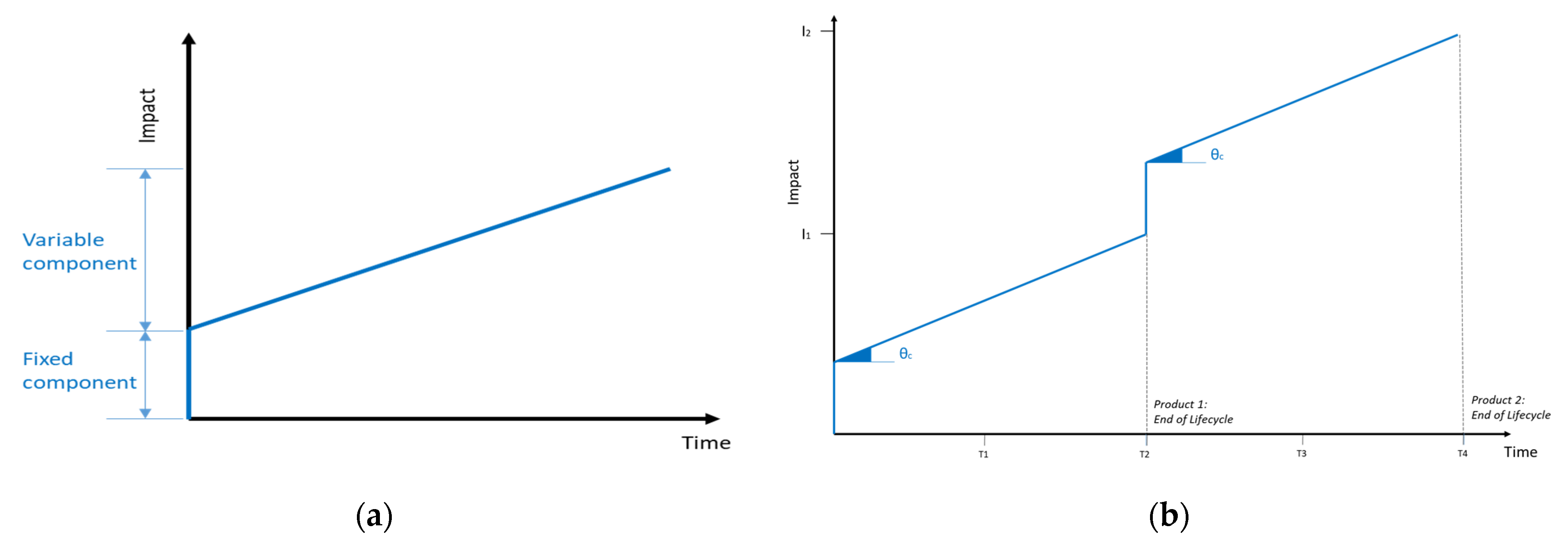

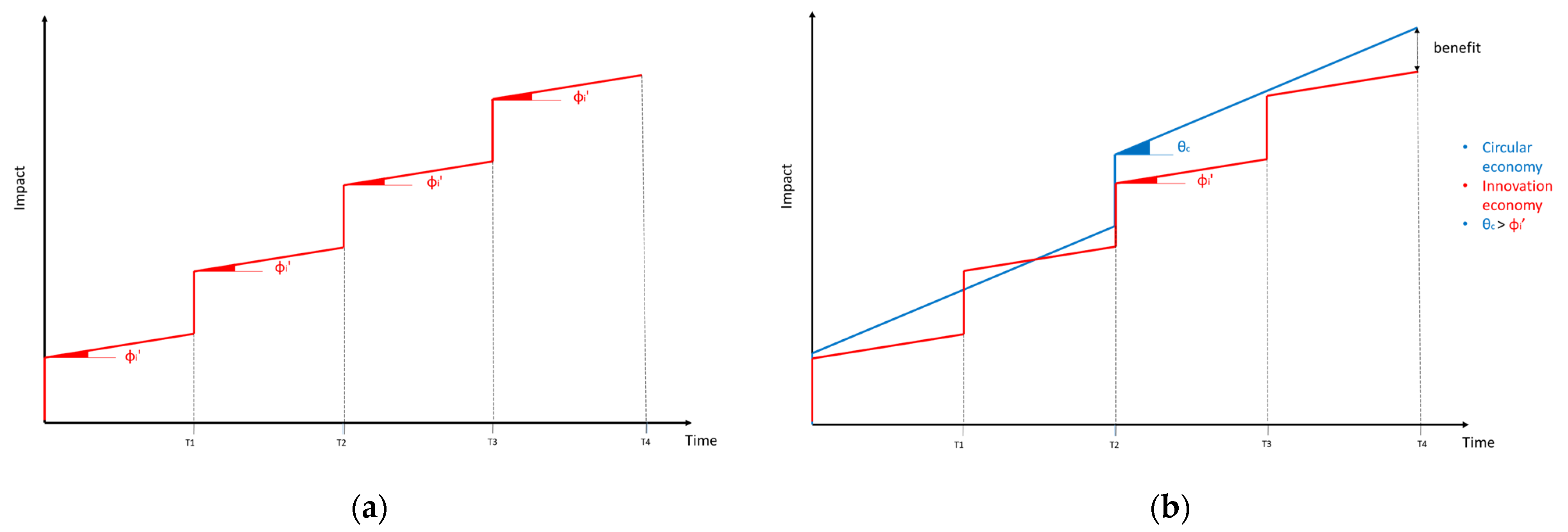
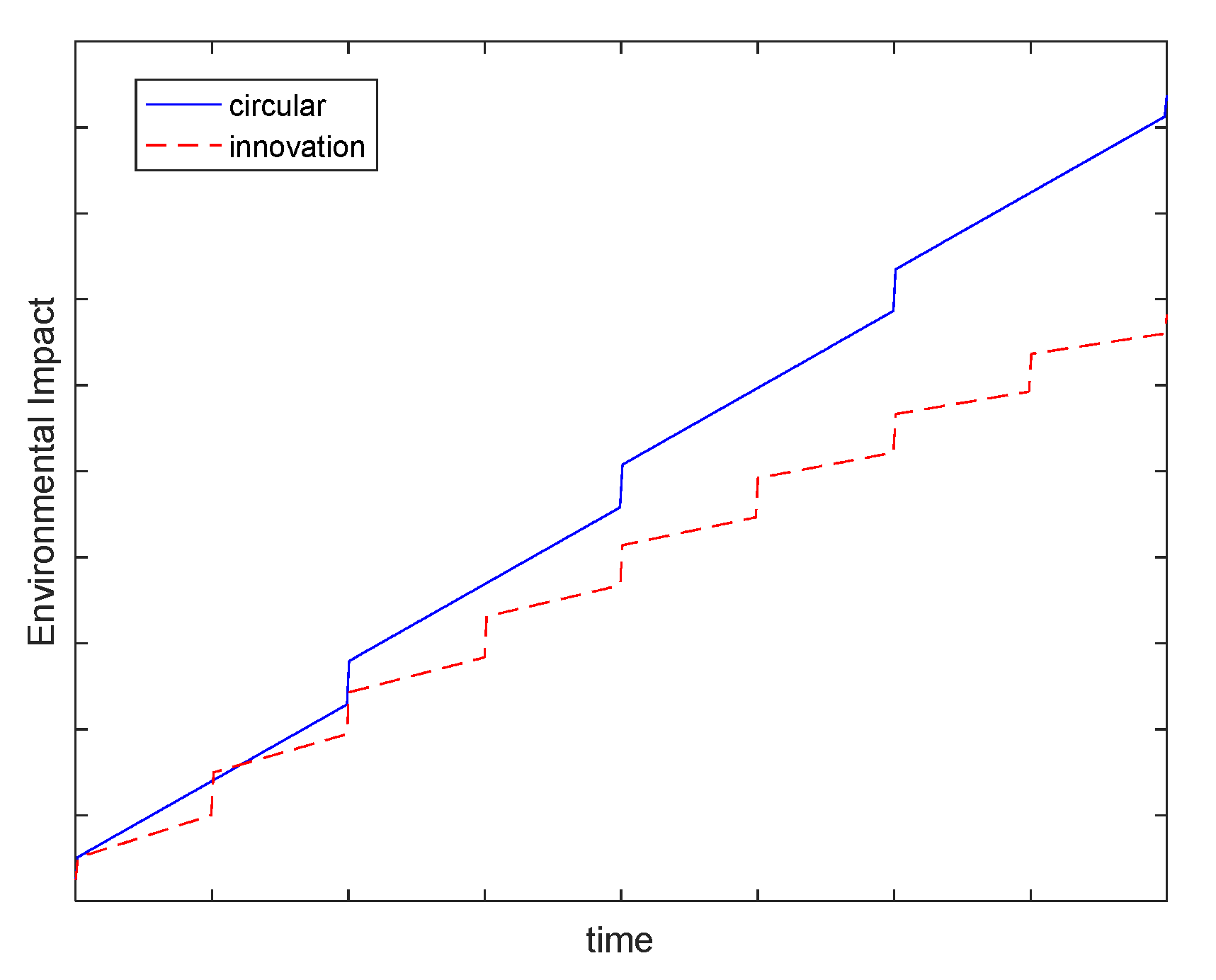
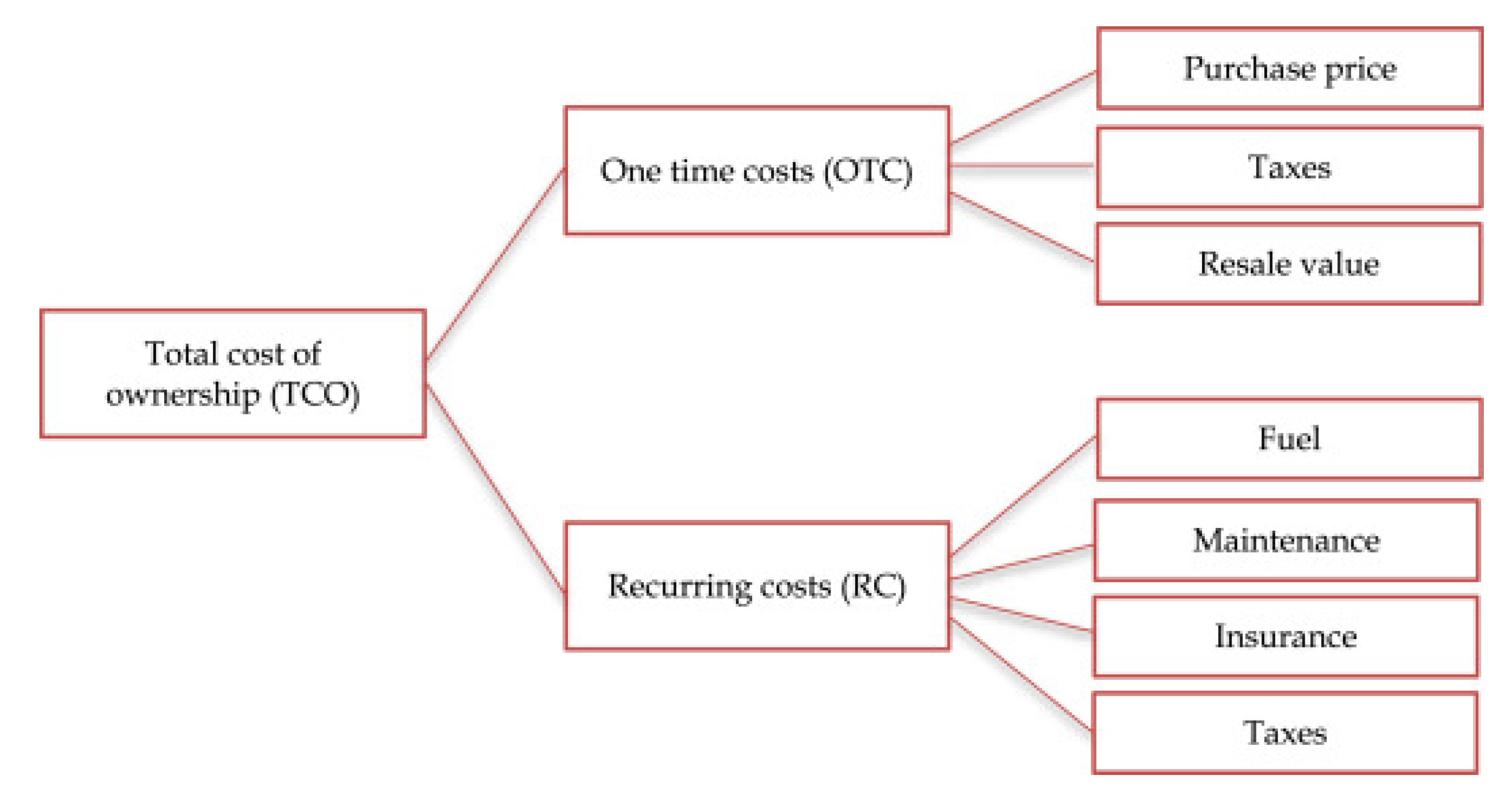

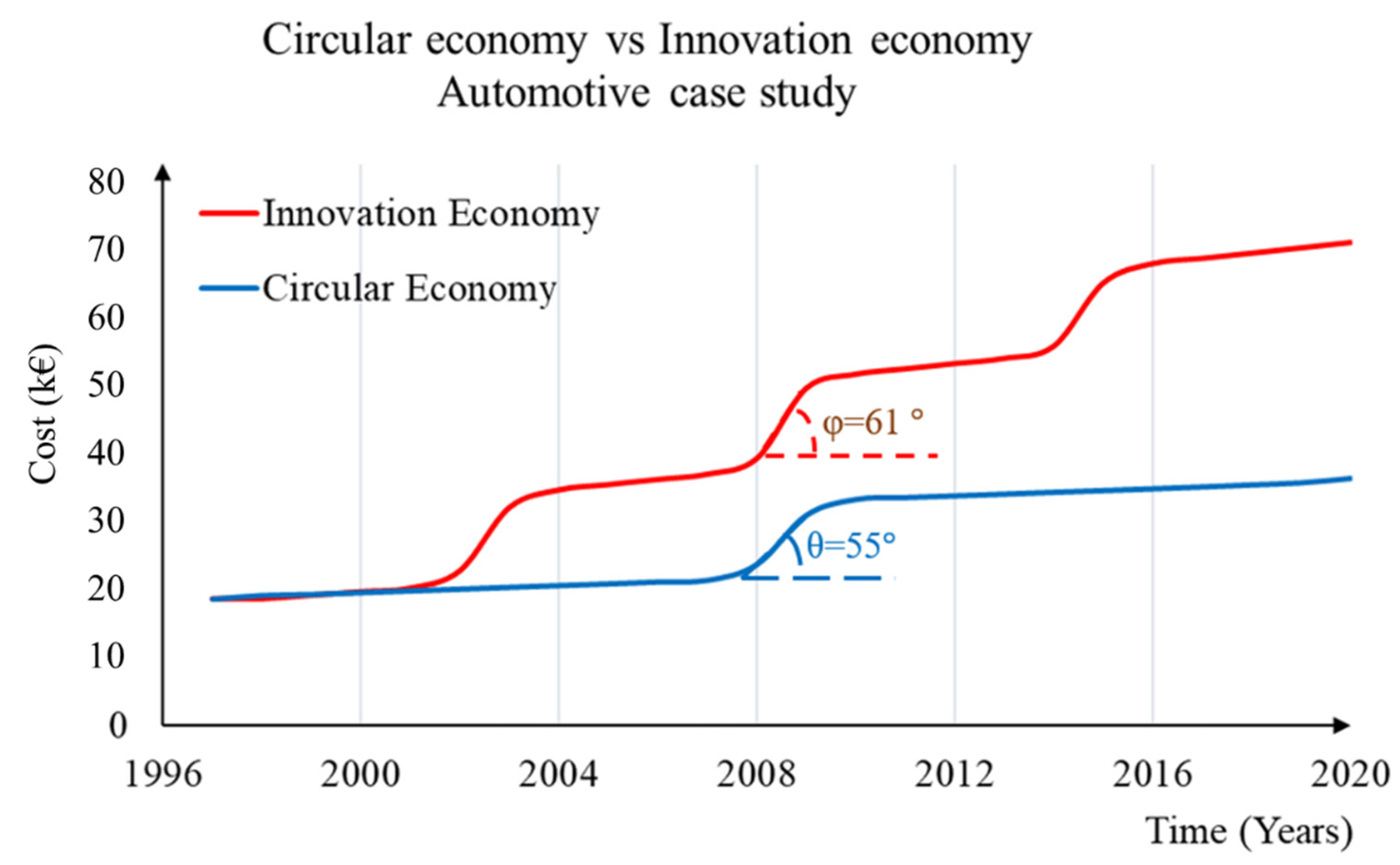
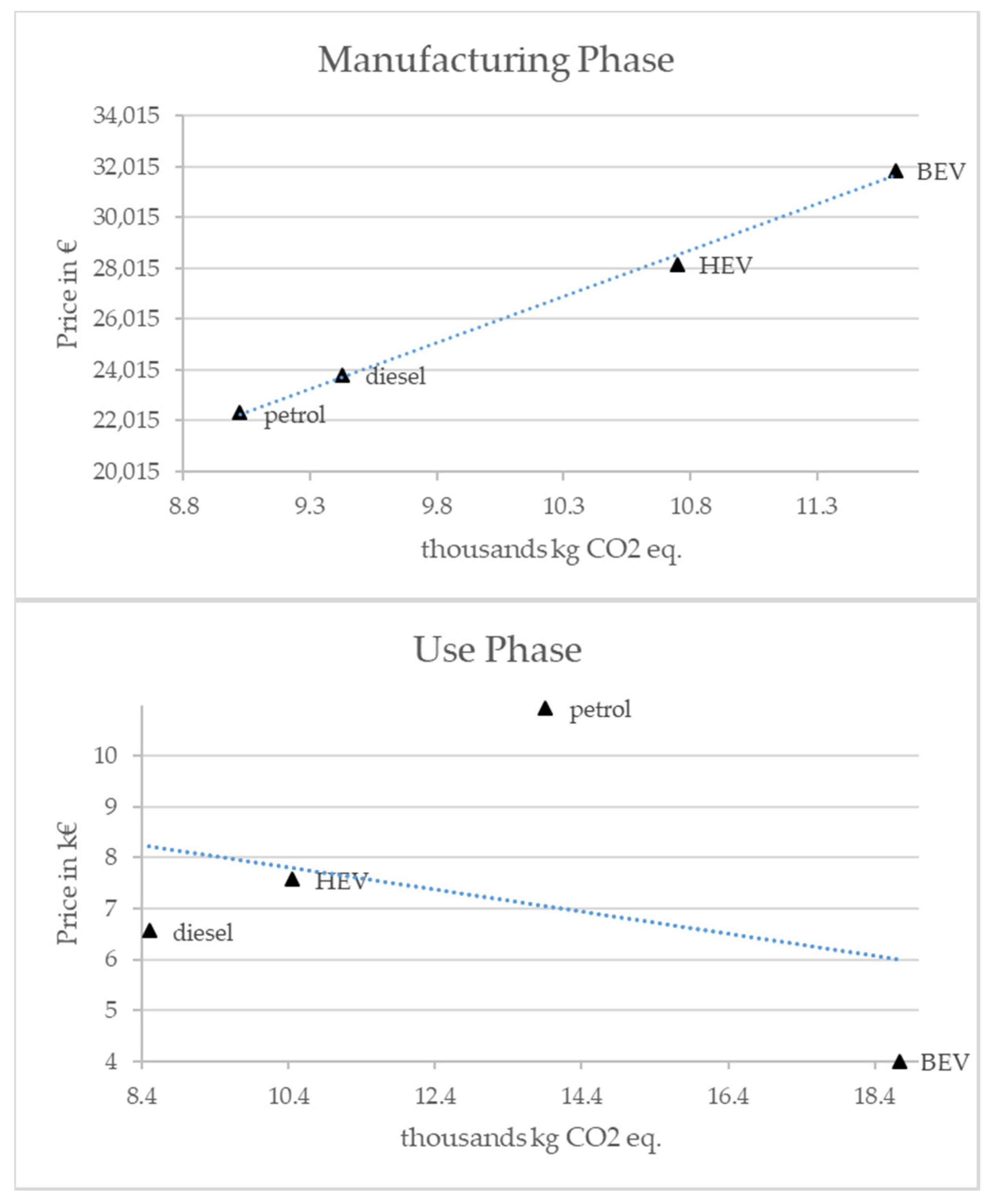
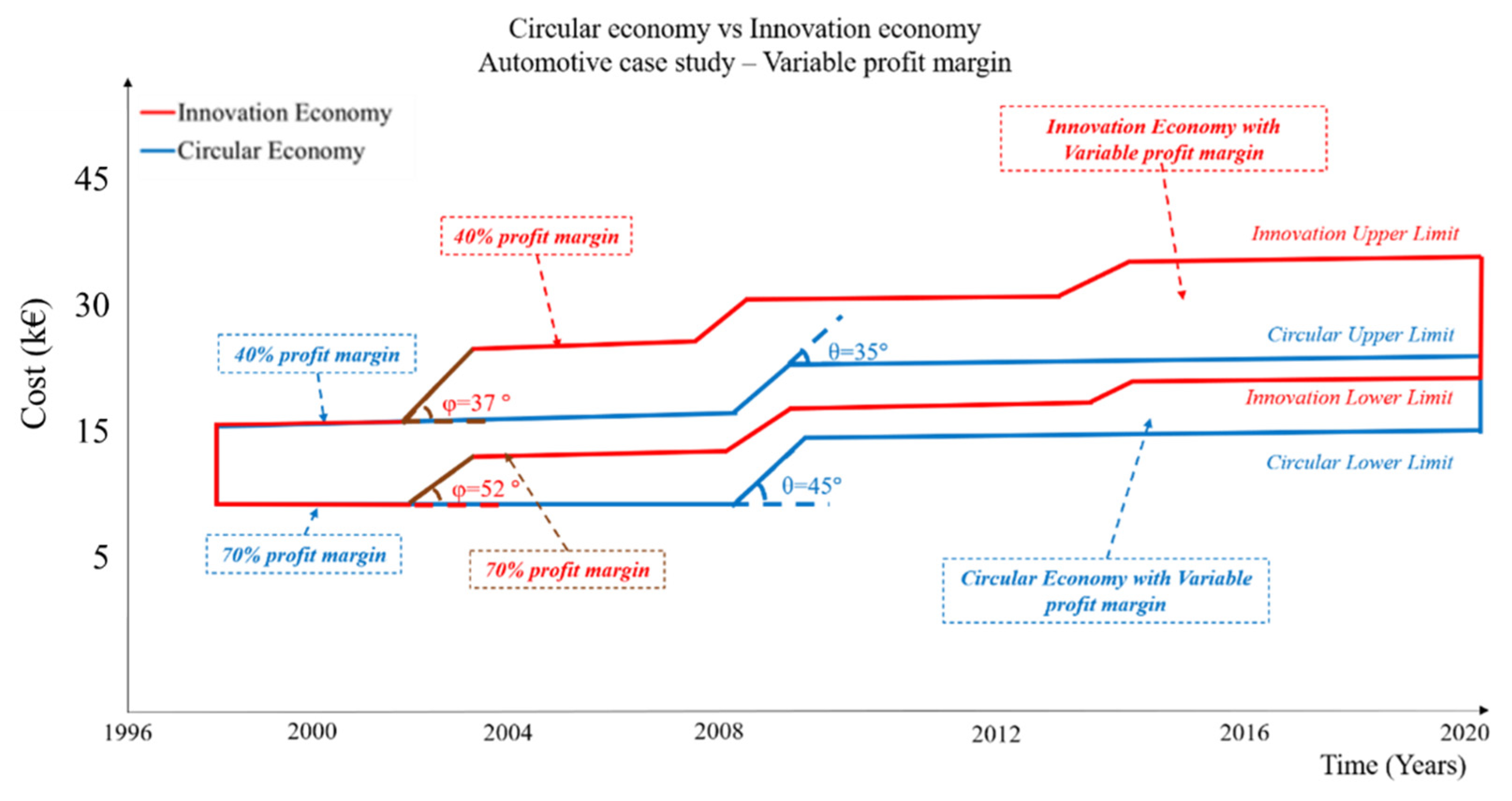
| iPhone Type | Year | Months | New Release after | Cost (€) | Cost(n)+ Cost(n + 1) (€) | Buy a New iPhone/Year (€) |
|---|---|---|---|---|---|---|
| iPhone | 2007 | 0 | - | 605 | 605 | 600 |
| iPhone 3G | 2009 | 13 | 13 | 691 | 1296 | 1200 |
| iPhone 3GS | 2009 | 24 | 11 | 700 | 1996 | 1800 |
| iPhone 4 | 2010 | 36 | 12 | 692 | 2688 | 2400 |
| iPhone 4S | 2011 | 42 | 6 | 722 | 3410 | 3000 |
| iPhone 5 | 2012 | 53 | 11 | 584 | 3994 | 3600 |
| iPhone 5C | 2013 | 65 | 12 | 700 | 4694 | 4200 |
| iPhone 5S | 2013 | 77 | 12 | 688 | 5382 | 4800 |
| iPhone 6/6 Plus | 2014 | 89 | 12 | 735 | 6117 | 5400 |
| iPhone 6S/6S Plus | 2015 | 101 | 12 | 735 | 6852 | 6000 |
| iPhone SE | 2016 | 113 | 12 | 359 | 7211 | 6600 |
| iPhone 7/7 Plus | 2016 | 131 | 18 | 745 | 7956 | 7200 |
| iPhone 8/8 Plus | 2017 | 137 | 6 | 760 | 8716 | 7800 |
| iPhone X | 2017 | 149 | 12 | 1022 | 9738 | 8400 |
| iPhone XS/XS Max | 2018 | 163 | 14 | 1050 | 10,788 | 9000 |
| iPhone XR | 2018 | 173 | 10 | 749 | 11,537 | 9600 |
| Model | Year | Price (€) | Cost of Use (€) | Total Cost (€) |
|---|---|---|---|---|
| MK1 | 1997 | 16,000 | 2020 | 18,020 |
| 1998 | 16,000 | 2070 | 18,070 | |
| 1999 | 16,000 | 2120 | 18,120 | |
| 2000 | 16,000 | 2170 | 18,170 | |
| 2001 | 16,000 | 2220 | 18,220 | |
| 2002 | 16,000 | 2270 | 18,270 | |
| MK2 | 2003 | 16,500 | 1880 | 18,380 |
| 2004 | 16,500 | 1900 | 18,400 | |
| 2005 | 16,500 | 1950 | 18,450 | |
| 2006 | 16,500 | 2000 | 18,500 | |
| 2007 | 16,500 | 2050 | 18,550 | |
| 2008 | 16,500 | 2100 | 18,600 | |
| MK3 | 2009 | 17,000 | 1730 | 18,730 |
| 2010 | 17,000 | 1780 | 18,780 | |
| 2011 | 17,000 | 1830 | 18,830 | |
| 2012 | 17,000 | 1830 | 18,830 | |
| 2013 | 17,000 | 1880 | 18,880 | |
| 2014 | 17,000 | 1930 | 18,930 | |
| MK4 | 2015 | 17,500 | 1560 | 19,060 |
| 2016 | 17,500 | 1630 | 19,130 | |
| 2017 | 17,500 | 1660 | 19,160 | |
| 2018 | 17,500 | 1710 | 19,210 | |
| 2019 | 17,500 | 1760 | 19,260 | |
| 2020 | 17,500 | 1760 | 19,260 |
Publisher’s Note: MDPI stays neutral with regard to jurisdictional claims in published maps and institutional affiliations. |
© 2021 by the authors. Licensee MDPI, Basel, Switzerland. This article is an open access article distributed under the terms and conditions of the Creative Commons Attribution (CC BY) license (https://creativecommons.org/licenses/by/4.0/).
Share and Cite
Stavropoulos, P.; Papacharalampopoulos, A.; Tzimanis, K.; Petrides, D.; Chryssolouris, G. On the Relationship between Circular and Innovation Approach to Economy. Sustainability 2021, 13, 11829. https://doi.org/10.3390/su132111829
Stavropoulos P, Papacharalampopoulos A, Tzimanis K, Petrides D, Chryssolouris G. On the Relationship between Circular and Innovation Approach to Economy. Sustainability. 2021; 13(21):11829. https://doi.org/10.3390/su132111829
Chicago/Turabian StyleStavropoulos, Panagiotis, Alexios Papacharalampopoulos, Konstantinos Tzimanis, Demetris Petrides, and George Chryssolouris. 2021. "On the Relationship between Circular and Innovation Approach to Economy" Sustainability 13, no. 21: 11829. https://doi.org/10.3390/su132111829
APA StyleStavropoulos, P., Papacharalampopoulos, A., Tzimanis, K., Petrides, D., & Chryssolouris, G. (2021). On the Relationship between Circular and Innovation Approach to Economy. Sustainability, 13(21), 11829. https://doi.org/10.3390/su132111829






